Bee-friendly shrubs offer bees plenty of flowers with important nectar and pollen. We have collected five suggestions for your garden.
We humans don’t make it easy for bees to find food: paved roads and commercial areas with large parking lots, large-scale monocultures with toxic pesticides, gardens with trimmed lawns and noble ornamental plants. With bee-friendly shrubs in your garden, however, you can support bees – without having to give up soft lawns or gorgeous roses right away.
Contents
- 1 Bee-friendly shrubs: what’s important
- 2 The snow heather as a bee-friendly early bloomer
- 3 Bee friendly shrub: the cornelian cherry
- 4 Suggestion for your garden: The raspberry bush as a summer bloomer
- 5 Bee-friendly shrubs: the bearded flower as a late bloomer
- 6 Bee-friendly: the shrub marshmallow as a late bloomer
- 7 More suggestions for a bee friendly garden
- 8 Author
Bee-friendly shrubs: what’s important
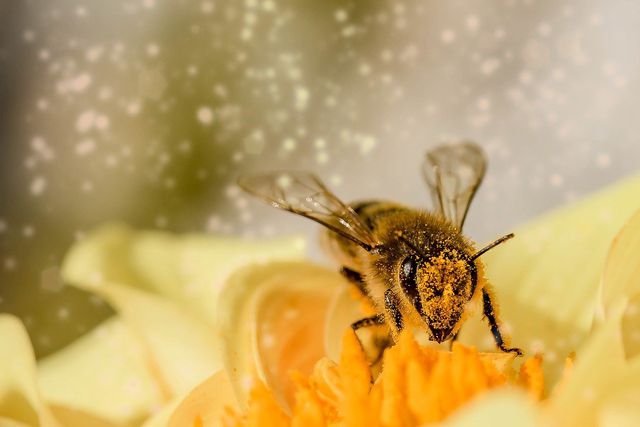
The main feature of bee-friendly shrubs is that their flowers are rich in nectar and pollen. In addition, their calyxes are not densely filled but wide and open, so that bees can easily reach the nectar and pollen. It’s important that the bee-friendly shrubs in your garden bloom at different times of the year – so bees can forage from spring to fall. Flowering plants are especially important in late summer and fall, as bees do not find enough food at this time and many beekeepers have to supplement their feed from August onwards.
We’ve put together five suggestions for your garden with two early bloomers, one summer bloomer and two late bloomers.
The snow heather as a bee-friendly early bloomer
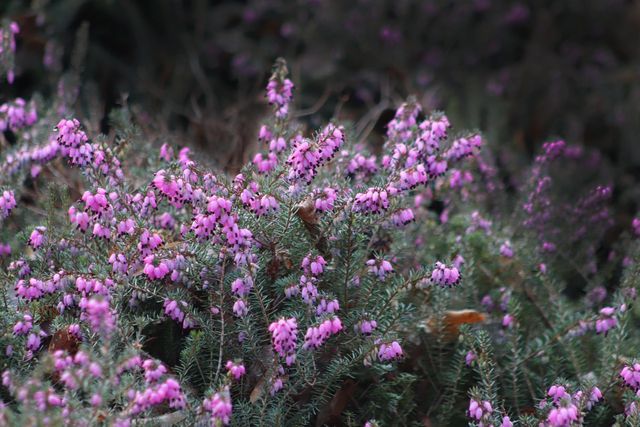
The evergreen snow heather or winter heather belongs to the dwarf shrubs and grows only up to 30 centimeters tall. It blooms as early as January and provides bees with a nutritious source of food after hibernation. This makes this bee-friendly shrub one of the early bloomers. With its pink or reddish colored flowers, snow heather brings life to your garden even in winter.
- Flowering time: January to April
- Nectar: very abundant supply
- Pollen: moderate supply
- Cultivation: calcareous, sandy to loamy soil
- Position: sunny to semi-shady
- Use: as ground cover in the bed or rock garden, in containers
Bee friendly shrub: the cornelian cherry
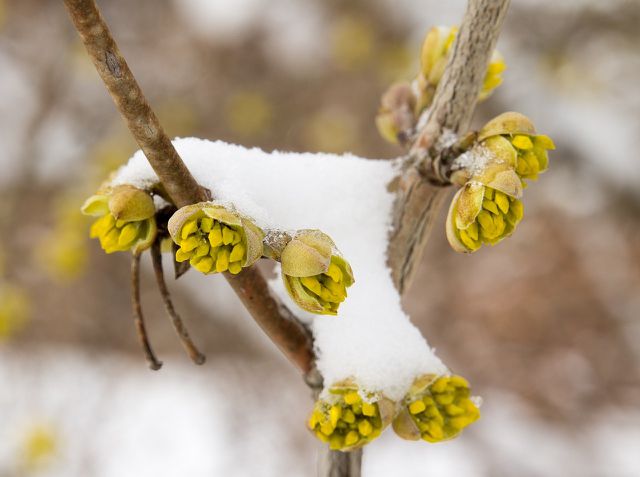
The insect-friendly cornelian cherry begins to bloom in dainty yellow umbels as early as the end of February, attracting hungry bees with its rich nectar supply. The cornelian cherry belongs to the dogwood family. Its red fruits, which ripen in late summer, serve as food for birds and other animals – but they are also edible for humans. If you regularly prune and trim the hardy cornelian cherry, you can also use it as a garden hedge. Without pruning, it will grow into a large shrub or small tree.
- Flowering time: end of February to April
- Nectar: abundant supply
- Pollen: moderate supply
- Cultivation: sandy to loamy soil
- Position: sunny to semi-shady
- Use: as hedge or solitary shrub/small tree
Suggestion for your garden: The raspberry bush as a summer bloomer
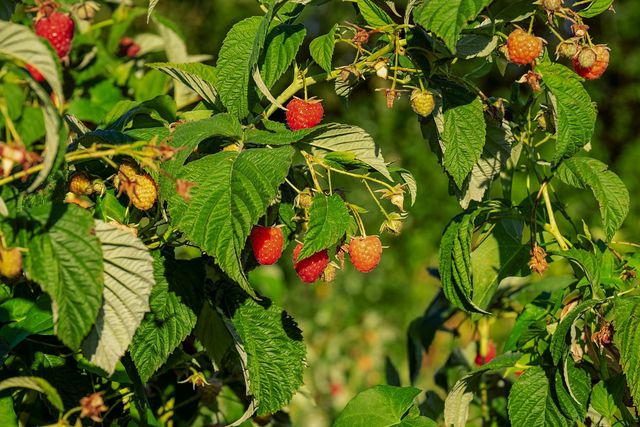
The raspberry bush can not be missing from our suggestions of bee-friendly shrubs for your garden. Raspberries are healthy and not only taste delicious – for bees, the flowers of the shrubs are a rich source of food. Other native berry varieties also grow on bee-friendly shrubs: Blackberry provides an abundant supply of nectar and pollen, and currant a moderate supply. However, the most bee-friendly is the raspberry bush.
- Flowering time: May to August
- Nectar: very rich supply
- Pollen: abundant supply
- Cultivation: moist, nutrient-rich soil
- Position: sunny to semi-shady
- Use: as a solitary shrub
Bee-friendly shrubs: the bearded flower as a late bloomer
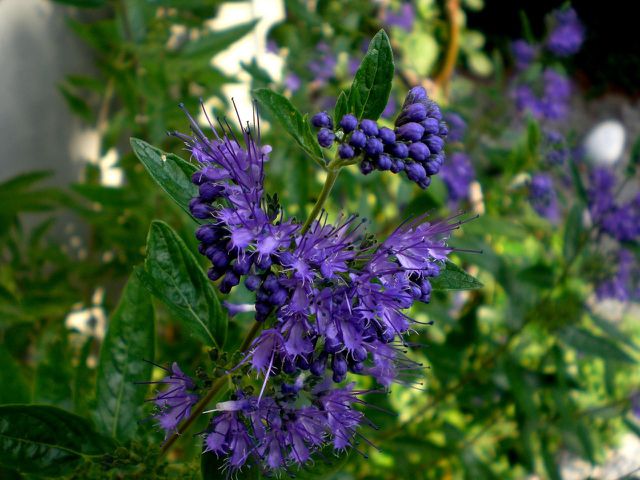
For those with a little less space, the bearded flower or bluebeard is a late bloomer and an extremely bee-friendly one at that! As a semi-shrub, the bearded flower grows about one meter high. It blooms in its blue glory from late July through September, providing bees and other insects in your garden with a very rich supply of both nectar and pollen. You can plant them either in beds or also on the terrace or balcony in containers.
- Flowering time: end of July to September
- Nectar: very rich supply
- Pollen: very rich supply
- Cultivation: gravelly to sandy soil
- Position: sunny
Use: in beds, rock gardens or containers
Bee-friendly: the shrub marshmallow as a late bloomer
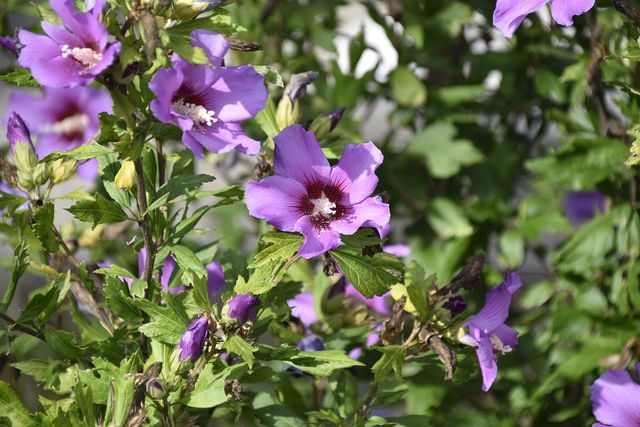
The shrub marshmallow – also known as hibiscus – is also a late bloomer. Its beautiful large flowers delight bees from early July to late September. Although it is one of the smallest shrubs, it can grow between one and a half and three meters tall. Its nectar supply is relatively low, but it makes up for it with its rich pollen supply and long blooming season. Perhaps you can even combine bearded mallow and bush marshmallow in your garden to provide tasty fall food for the bees?
- Flowering time: early July to late September
- Nectar: low supply
- Pollen: abundant supply
- Cultivation: sandy to loamy soil
- Position: sunny
Use: in beds or as a solitary shrub
More suggestions for a bee friendly garden
If you don’t have room for multiple shrubs, alternate their blooming seasons: Bee-friendly perennials also make great plants for your garden. There are also practical bee-friendly herbs for the garden and balcony – lavender and thyme even belong to the genus of shrubs and help the bees in their search for food as late bloomers until late summer and fall.
Are you looking for a way to provide food for bees in an uncomplicated way and without much effort? How about leaving a strip at the edge of the lawn the next time you mow? It’ll save you some work and provide bees and other busy pollinators like bumblebees, hoverflies, beetles and butterflies with a bountiful table of meadow flowers and nutritious clover. And if you want to make your lawn edges extra gorgeous, try a bee-friendly seed mix (available at **Avocado Store, for example). You can also set up an insect hotel to help:









